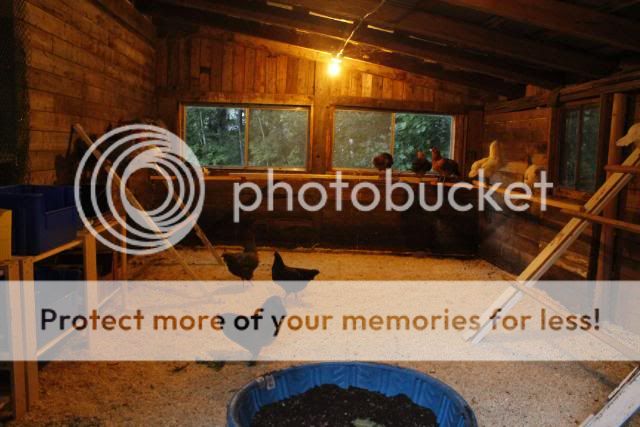We built a chicken tractor for 4 chickens in June. After living with the tractor for 3 months, we're already making plans for a different coop. Much of our desire for a different coop is because of things we wish we had done differently. We had no prior experience and failed to anticipate some very basic things.
A few things we wish we had done differently include:
As we begin to plan for a larger, permanent coop, I'm curious as to what other coop builders would have done differently. I'm trying to anticipate our mistakes before we make them!
A few things we wish we had done differently include:
- Larger - Yes, we've become victims of "Chicken Math"!
- More Windows - Sometimes I don't want to stick my head or hand into a place that isn't well lit [especially after seeing pics of snakes in nesting boxes. Arggghh!] and the girls need the light, too.
- Roosts higher than nesting boxes - Oh, we figured that out and fixed it but what a mess!
- Chicken pop door situate at side of coop wall instead of in the middle - Takes away too much valuable interior space if door is in the middle of the wall, especially in a tractor.
- More large "people sized" openings - Especially for a tractor to make it easier for cleaning. The ideal would be to be able to lift up or open an entire side of the coop.
- Nesting boxes extending outside - To give more interior space and to keep them totally away from roost area.
- Shaded or Roofed Run - The heat wave hadn't hit when we were building it. We moved it to shade but still needed to use reflective tarps in areas to keep them out of the sun.
- Storage Space - I guess running to the house to get stuff is good exercise but I sure would love a small area to keep the things I need daily.
As we begin to plan for a larger, permanent coop, I'm curious as to what other coop builders would have done differently. I'm trying to anticipate our mistakes before we make them!

 Here is my coop for reference..
Here is my coop for reference..

 Also, tiered perches work great. I have more roosts then needed, which is also a plus. There is less fighting that way.
Also, tiered perches work great. I have more roosts then needed, which is also a plus. There is less fighting that way.
